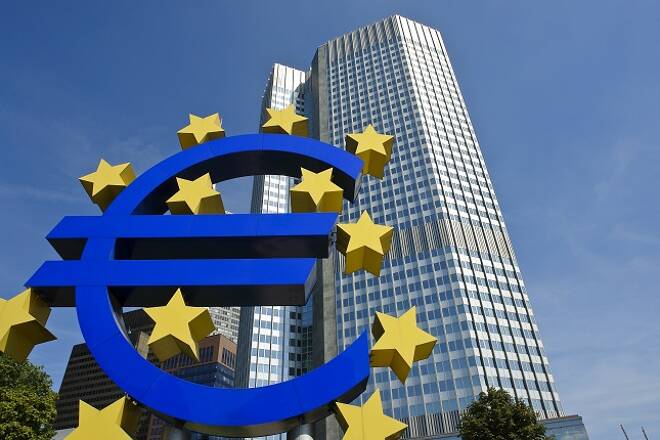Advertisement
Advertisement
EUR/USD Daily Technical Analysis for January 26, 2018
By:
EUR/USD Whipsaws as Trump Offsets Draghi
The EUR/USD whipsawed first climbing as following through following U.S. Treasury Secretary Mnuchin comments Wednesday then surging following the less than dovish commentary following the ECB meeting from Draghi and the sagging following comments from U.S. President Donald Trump where he believes the dollar will be much strong in the future.
Technicals
The EUR/USD surged to a 3-year high following the ECB’s monetary policy decision and follow up press conference. Prices hit a high of 1.2537, but then corrected back to the 1.24 handle. Support tis seen ne rathe 10-day moving average at 1.2271. Resistance is seen near the 2014 highs at 1.2569. Momentum has turned positive as the MACD (moving average convergence divergence) index generated a crossover buy signal. This occurs as the MACD line (the 12-day moving average minus the 26-day moving average) crosses above the MACD signal line (the 9-day moving average of the MACD line). The MACD histogram is printing in the black with an upward sloping trajectory which points to a higher exchange rate. The RSI moved higher with price action reflecting accelerating positive momentum.
ECB getting nervous about EUR strength
Draghi said recent data was promising and that the ECB was getting more confident on the inflation outlook, but added that domestic price pressures remain muted. At the same time Draghi highlighted the EUR volatility creates uncertainty and needs to be monitored with regard to the future outlook for inflation. Against that background the ECB still needs ample degree of stimulus to boost inflation. Draghi highlighted that inflation is expected to pick up gradually. So a balancing act that tries to prevent market expectations from running ahead, but cautiously laying the ground for the phasing out of asset purchases by the end of the year at the latest and a more pronounced shift in guidance in March, when the next set of forecasts are due.
German Ifo reading improves, but expectations drop sharply
The German Ifo index came in higher than anticipated at 117.6, up from 117.2 in the previous month, but the breakdown showed a mixed picture, with the overall improvement only driven by a pick up in the current conditions reading, while the forward looking expectations index fell back sharply – to 108.4 from 109.4 in the previous month. So a further sign that the German economy started strongly, but that going ahead growth momentum is likely to slow down.
German GfK consumer confidence jumped higher
German GfK consumer confidence jumped higher with the February projection to 11.0 from 10.9 in the previous month, against expectations for a steady headline reading. The full breakdown, which is only available for January, showed price expectations turning less negative and business expectations surging higher, dragging income expectations and the willingness to buy also up. The willingness to save turned less negative, which could also reflect expectations of rising interest rates. All in all and against the background of a strong PMI round, the data leaves the German economy in a strong position for ongoing very robust expansion and with consumer demand apparently set to rise while spare capacity is being eroded and wage growth set to pick up this year, inflation risks in Germany are likely to be higher than in the Eurozone on the whole.
UK January CBI Sales Beat Expectations
The UK January CBI distributive sales survey beat expectations, with the headline realized sales figure falling to a +12 reading, down from +20 in December. The median forecast had been for a sharper pullback to a +10 reading. Sales were for the time of year were still the weakest against seasonal norms in over four years, however. Relatively high inflation coupled with relatively low income growth have been weighing on retail sales.
The Norges Bank left its policy rate at 0.5%,
The Norges Bank left its policy rate at 0.5%, as had been widely anticipated. The central bank noted in its Monetary Policy Report that the outlook and the balance of risks for the Norwegian economy do not appear to have changed substantially since December. It noted that while the upturn in the Norwegian economy appears to be continuing, inflation is low and that there remained a need for an expansionary policy, with domestic capacity utilization deemed to remain “somewhat below a normal level.” The Norges Bank signaled that the key policy rate would remain at 0.5% in the period ahead.
About the Author
David Beckerauthor
David Becker focuses his attention on various consulting and portfolio management activities at Fortuity LLC, where he currently provides oversight for a multimillion-dollar portfolio consisting of commodities, debt, equities, real estate, and more.
Did you find this article useful?
Latest news and analysis
Advertisement
